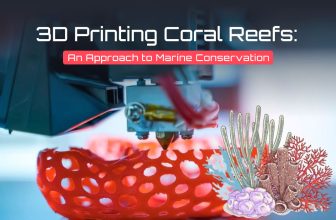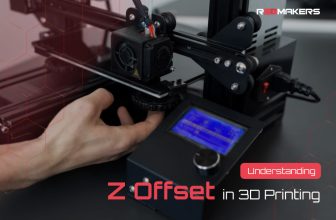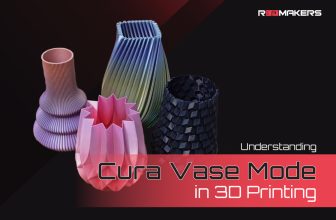3D Printer Enclosure Ventilation: Ensuring Safety and Performance

The world of 3D printing has transformed numerous industries, from healthcare to automotive. As we marvel at the objects crafted intricately layer by layer, it’s essential to address the unnoticed aspects of the process. One critical aspect that often goes unnoticed but is vital for both safety and functionality is 3D printer enclosure ventilation. Proper ventilation doesn’t only enhance the printing quality but is a guardian against harmful particles and fumes that arise during printing.
Moreover, the evolution of 3D printing has brought with it a deeper understanding of its intricacies and challenges. Just as we have developed ways to refine the printing resolution, improve material strength and increase production speeds, we must also advance our methods for ensuring a safe and sustainable printing environment.
Adequate 3D printer enclosure ventilation is more than just a supplementary feature; it’s an integral part of the printing ecosystem. By giving it the attention it deserves, we not only prioritize the well being of users but also ensure the longevity and reliability of the printing equipment, making certain that the transformative potential of 3D printing remains unhindered.
Why Ventilation Matters for Your 3D Printer Enclosure
3D printing, especially when using materials like ABS or Nylon, releases ultrafine particles and potentially toxic fumes. These aren’t just buzzwords; in concentrated forms, these emissions can have adverse health impacts. The confined space of a 3D printer enclosure becomes a receptacle for these particles, which can then circulate in the ambient environment, affecting both the user and the printer’s consistency. Proper ventilation, thus, becomes the frontline defense:
User Safety: The health of those operating or present around 3D printers is paramount. Extended exposure to the fumes and particles, even if they don’t immediately manifest symptoms, can be insidiously harmful. A well ventilated enclosure ensures that users remain safe, creating a conducive atmosphere for both creativity and health.
Optimal Printer Performance: Beyond the health implications, there’s the equipment to think about. Trapped heat and volatile compounds can compromise the printer’s efficiency and longevity. By ensuring good ventilation, users guarantee that their expensive machinery works optimally, delivers high quality prints, and enjoys a longer functional life.
Essential Elements of 3D Printer Ventilation Systems
Ensuring clean and safe air around 3D printers isn’t a one device solution; it’s a system that integrates various components working in harmony. Each part plays a pivotal role in capturing, neutralizing or expelling contaminants:
3D Printer Air Purifier: Think of this as the lungs of the setup. This device cleans the air within the enclosure, ensuring that harmful particles and fumes are neutralized. While an air purifier is a commendable standalone solution, when used in conjunction with other ventilation systems, its effectiveness multiplies, promising a pristine printing environment.
3D Printer Air Filter & 3D Printer HEPA Filter: Filtering is a two step process for thorough air purification. The primary 3D printer filter works as the first line of defense, capturing larger particles and preventing them from re-entering the air circulation. In contrast, the 3D printer HEPA filter specializes in dealing with the minutiae. It’s designed to trap ultrafine particles, ensuring that up to 99.97% of potential contaminants stay entrapped and don’t compromise air quality.
3D Printer Ventilation Enclosure: For those wanting an all-in-one solution, this is the answer. These specially designed enclosures come equipped with integrated ventilation systems. While insulating the printer and providing a controlled environment, they also ensure that there’s a steady flow of fresh air, keeping the interiors free from any harmful emissions and excess heat.
Creating an Efficient Ventilation Setup for Your 3D Printer Enclosure
Creating a well ventilated space for 3D printing isn’t about just installing a fan and forgetting about it; it’s a more nuanced setup:
Positioning: The location of your printer can significantly influence air quality. Ensure that the printer is strategically positioned in a well ventilated area, preferably near windows or exhaust systems. This not only helps in naturally expelling fumes but also aids in maintaining a consistent temperature, ensuring optimal printing conditions.
Integrate Filters: Start by choosing the right filters for your setup. Install a 3D printer filter for capturing the more evident particles, and bolster this with a 3D printer HEPA filter for a more granular clean-up. With both in place, you’re setting up a dual barrier against potential contaminants, assuring a cleaner, safer air environment.
Regular Maintenance: A system is only as good as its maintenance. Beyond the initial setup, the effectiveness of a 3D printer enclosure ventilation system hinges on its upkeep. This includes periodic cleaning, timely replacement of filters, and ensuring that the ventilation pathways remain free from obstructions. This routine ensures longevity and consistent performance.
Conclusion
3D printing is a blend of art and science, a testament to human ingenuity. However, to keep this marvel safe and efficient, one must pay heed to the invisible aspects, like ensuring optimal 3D printer enclosure ventilation. Integrating components like air purifiers, filters, and specialized ventilation enclosures helps maintain a balance between creativity and safety, promising a future where ideas can take shape without compromising well-being.








